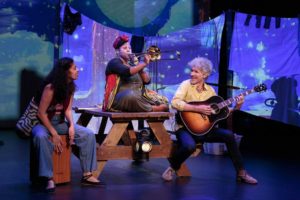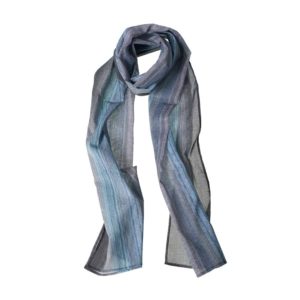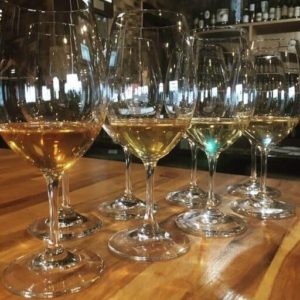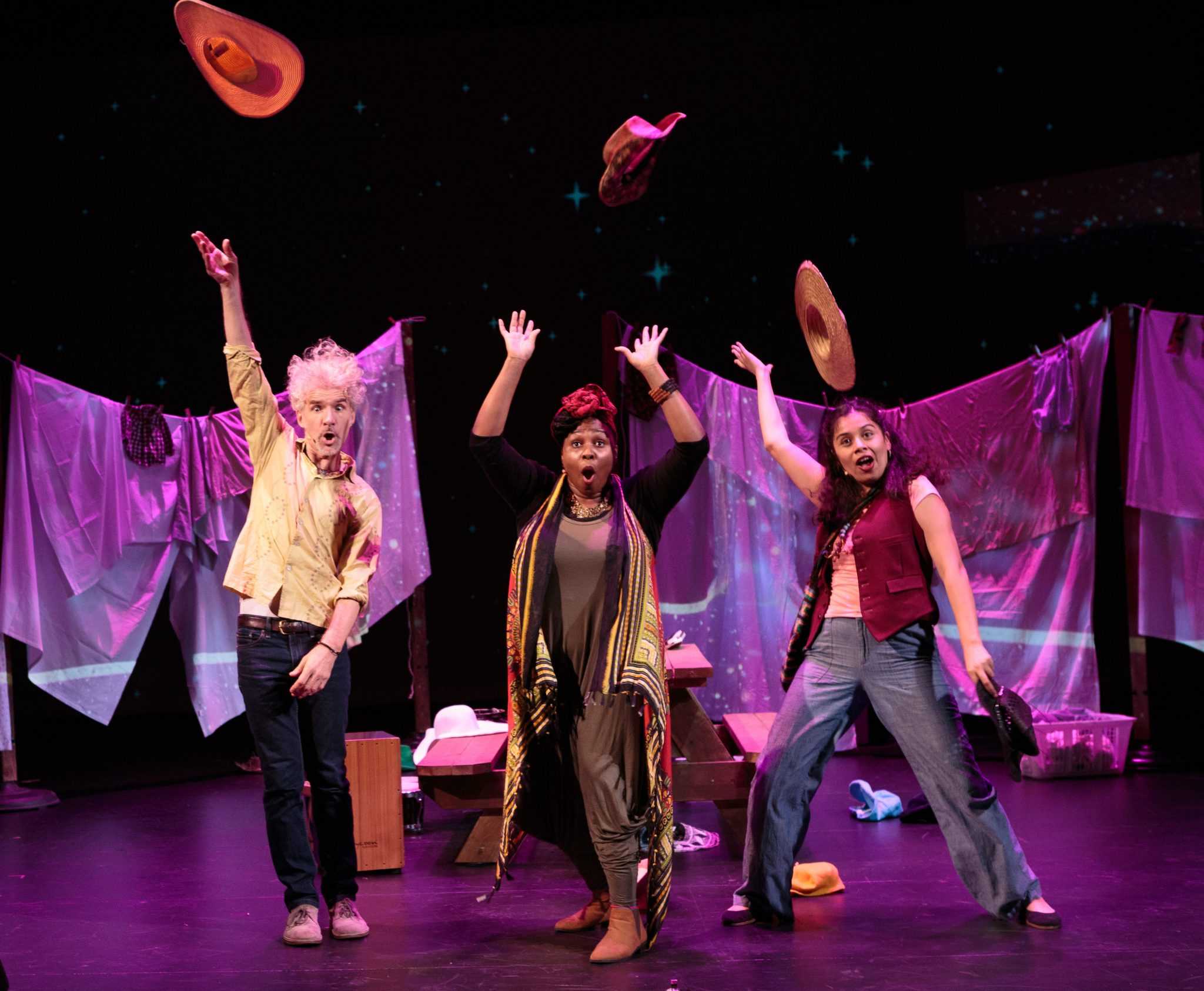
Dan Zanes’s Sensory Friendly Folk Opera
By Matt Caprioli
After founding The Del Fuegos in 1984 to moderate commercial success (Rolling Stone hailed them the best band of 1984) Grammy-award winner Dan Zanes turned to children’s music in the mid-90s after the birth of his daughter. He then started playing for neighborhood kids. Once a tape of his circulated around the neighborhood, he realized there was more satisfaction making music for families, not just adults. Forming Dan Zanes and Friends in 2000, he hedged his money on making children’s music.
It was a smart bet. Zanes has been dubbed “The crown prince of contemporary kid’s music” by People. His music’s been featured on Sesame Street, Disney, and Nickelodeon; his collaborations include Philip Glass, Sheryl Crow, Lou Reed, and Bob Weir. Dan Zanes and Friends received a Grammy for Best Musical Album for Children in 2007.
Zanes’s newest album, “Night Train 57: A Sensory Friendly Folk Opera” comes to Brooklyn Music Academy (BAM) on Sept 20 as part of the Brooklyn Americana Music Festival. Zanes will be joined by jazz vocalist Claudia Eliaza and comic percussionist Yuriana Sobrino. Eliaza (whom Zanes married at the New York courthouse earlier this year) continues to work in music therapy since receiving a degree in the subject from Berklee College of Music.
The Kennedy Center commissioned Zanes last year to write music that would vibe well with all children, including those with autism spectrum and learning developments. At each performance, light and movement are modulated accordingly. This of course follows the spirit of the Americana festival: inclusivity, community, and a good time had by all. All ways of responding to music are welcome.
The opening track (and personal favorite) “Songs are Everywhere” says that songs can be picked up from anywhere: a park, a laundromat, the sidewalk. Things literally take off with the title track “Night Train 57” as a picnic table gains the gift of flight; it flies higher and higher as the tracks rolls on. Throughout, the album delivers sweet textures and clever arrangements: it widens accessibility without losing sophistication as it travels “to the moon and the stars.” Ending with the twinned “The Darkest Night” then “Bright Morning Song,” it’s a beautiful album that’s sure to leave you with a smile.
Sept 20 8pm. 30 Lafayette Ave (718) 636-4100

The one and only Red Hook scarf
By Matt Caprioli
Namrata Vansadia has spent her entire adult life in Brooklyn. As a graduate school at Pratt winded down, she was getting dizzy at the speed of change around Brooklyn. To capture pieces of the Brooklyn she loved, she decided to make scarves that could carry aspects of the city in their very fabric.
“Everything was changing around me so quickly, literally and visually changing. This was my way of archiving a lot of things that I think are very special about Brooklyn.”
In late 2013, along with her partner, Sanksshep Mahendra, (whom she met at Pratt) the two co-founded Brooklyn Block, a unique scarf company that currently offers just 11 products.
Here’s what makes their scarves so eye-catching: Mahendra takes a video of a neighborhood that strikes a chord with them. They break down the audiovisuals to raw code, then run it through an app of their own devising. The output is an array of block colors reminiscent of the neighborhood footage. Vansadia then prints the patterns on silk scarfs. When they ship it out, the package comes with a Polaroid of the specific location.
The vivacity of each neighborhood comes out in the scarf: Times Square has swatches of bright yellow; Brooklyn Heights many brownstone reds. The DUMBO based scarf was taken at night, and carries a swirling view of the skyline. For the Red Hook scarf, you’ll see a fine composition of gentle blues and placid greys. Vansadia said the video behind the pattern was taken around Red Hook Dock, just behind Fairway.
Everything’s printed on silk, making for quite the gift. At 100-125 dollars a scarf, you’re paying for the memory and the rare opportunity of having the city threaded through what you wear. For the time being, Vansadia doesn’t plan for a Red Hook 2.0 scarf, which means for now, there is one and only one Red Hook Scarf.
You can find Brooklyn Block products at MoMA design store (Manhattan, or if you’re in Tokyo and feeling homesick), or thebrooklynblock.com

Sweet selections from Red Hook Winery
By Shayna Goodman
Located on Pier 41, Red Hook Winery is the first urban winery to source their grapes exclusively from New York state.
How good is New York wine? In the crowded tasting rooms on the North Fork, it can be difficult to sip discerningly over the noise of drunken day partyers. But in the cerebral quiet of Red Hook Winery, you might be surprised to find how unique and complex Brooklyn-made wine can be.
When Brooklyn-native Mark Synder founded Red Hook Winery in 2008, history was on his mind: the tasting room, decorated haphazardly with second-hand furniture, looks out onto the water and the Statue of Liberty.
Snyder created the winery as homage to the Italian immigrants who settled in Brooklyn and made wine in their basements. In the era of mass immigrations from southern Europe, the building was a storage facility for imported products such as cotton and cocoa.
Snyder also happens to be the former sound technician for Peter Frampton and Billy Joel. He brings an artistic approach to the industry that pairs well with the neighborhood.
Grapes are sourced from the salty terroir of the North Fork of Long Island and the Finger Lakes upstate. The latter produces wines that have thrived in Germany and Austria.
Red Hook’s wines include traditional varietals as well as unusual blends such as “St. Agnes”, a full-flavored mix of Sauvignon Blanc & Chardonnay. Or “League of the Storm” and “Pebbles on the Shore,” two different blends of Cabernet Franc & Merlot.
These wines are surprising, the names in conversation with the history of Brooklyn and the facility.
On a recent Thursday afternoon, the tasting room was full of restaurateurs and neighborhood locals, enjoying the sea breeze coming in through the open doors. There were strollers parked by the tables, baguettes and hunks of local cheese.
The sommelier, Sophie Huberdeau, explained that on weekends the scene includes a few (tasteful) bachelorette parties and a handful of tourists. But on a whole, she explained, “it’s usually peaceful”—less of wine bar, more of an educational center, where Brooklynites can take classes, do a tasting and take tours of the facility complete with samplings of new wines, straight from the barrel.










